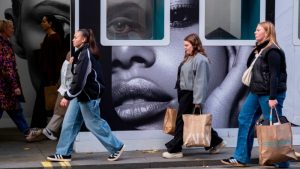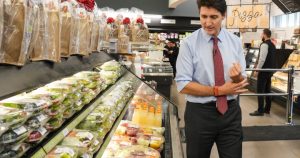Investors turn to volatility trades to profit from tight US election
Investors are seeking to profit from the uncertainty over the outcome of the US presidential race by turning to complex derivatives trades, which they believe can benefit from stock market moves regardless of who wins.
With fewer than 30 trading days to go, the election remains extremely close, risking a repeat of 2020’s disputed result.
A growing number of investors are seeking to tap into this potential market turbulence by betting on volatility rising sharply in the coming weeks.
Options markets are currently pricing in a roughly 2.8 per cent swing in the benchmark S&P 500 stock index on November 6, the day after the vote, according to analysis by UBS.
That figure has been gradually rising over the past month and many investors expect it to continue, said Maxwell Grinacoff, head of US equity derivatives research at UBS.
“People are starting to pay attention, asking if these levels of implied move are warranted,” he added. “Most people I’ve been speaking to have said [this] is probably still too cheap,” meaning the size of the implied move is likely to rise.
At this stage before the 2020 election, options focused on the day after the election were trading at similar prices before jumping sharply just before the vote.
The S&P 500 rose 2 per cent the day after the 2020 election, and 1.1 per cent the day after the 2016 election.

In part, the pricing reflects hedging to protect against potential losses elsewhere in investors’ portfolios after strong gains in equity markets so far this year. But some investors are also placing bets in the hope of profiting from spikes in market nervousness.
After much investor speculation about the size and timing of interest rate cuts by the Federal Reserve, which reduced borrowing costs by a half of a percentage point last month, analysts now expect the November vote to take centre stage in equity markets.
But the tight race means trading volatility is seen as a safer bet than trying to guess which stocks or sectors will do well from a victory for former president Donald Trump or vice-president Kamala Harris.
“Our base case is still that this is basically a toss-up, and most clients have coalesced around the same view,” said Stuart Kaiser, head of US equity trading strategy at Citi.
“If you talk to a client who thinks it’s 60-40 in favour of Trump, you could talk about owning bank stocks. If you think Kamala is more likely to win, trading a basket makes sense,” he added. “But if you think it’s 50-50, it will be very hard to trade directionally, it’s more of a vol trade.”
Trading volatility typically requires investors to use more complicated derivatives trades, leading to a range of complex strategies with names such as “straddles” and “collars” that involve buying and selling several derivatives tied to individual stocks or an index such as the S&P 500.
Investors can also buy and sell derivatives tied to the Vix index, the market’s “fear gauge”, which uses the price of S&P 500 options to create a proxy for expectations of market volatility over the next 30 days.
Analysts at Cboe Global Markets, the company that operates the Vix, noted on Monday that over the past week there had been “tremendous” demand for Vix call options, which pay out if the index rises.
Kaiser said another popular recent trade among clients involved selling Vix put options. Puts give the buyer the right to sell at a set price. For the seller, however, they generate income so long as election-related nervousness keeps the volatility index above a pre-agreed level.
Cboe Global Markets last week listed a new type of volatility-linked product tied to realised rather than expected volatility, with the launch timed to ride an expected uptick in demand for hedging and volatility trading ahead of the election. It is also planning to start trading a new type of option linked to Vix futures this month.
Some investors have been buying up Vix futures contracts that expire in late November. Because the Vix is forward-looking, contracts that expire a few weeks before the election have always carried a premium.
However, the price of futures that expire a few weeks after the election has been moving closer to that of the October contract. In theory, the November future is supposed to reflect December’s expected volatility, but traders are betting demand even for this contract will spike in the final stretch of the election campaign after the earlier contract expires.
Volatility tends to rise ahead of presidential elections and fall back to normal levels shortly afterwards. Ed Tom, a derivatives strategist at Cboe, said markets were assuming this year’s vote would follow a similar pattern, despite some concerns about whether the result may be contested. Although S&P 500 options are pricing in big potential swings on the day immediately after the vote, implied volatility for subsequent days is much lower.
“Option traders are still pricing in an additional premium for this election versus other elections,” he said. “So that’s another way of saying that option traders believe that there’s more uncertainty associated with this particular election than many others in the past . . . [but] they’re not really pricing in a prolonged contested scenario, they’re treating this as if it were a regular election.”
#Investors #turn #volatility #trades #profit #tight #election





